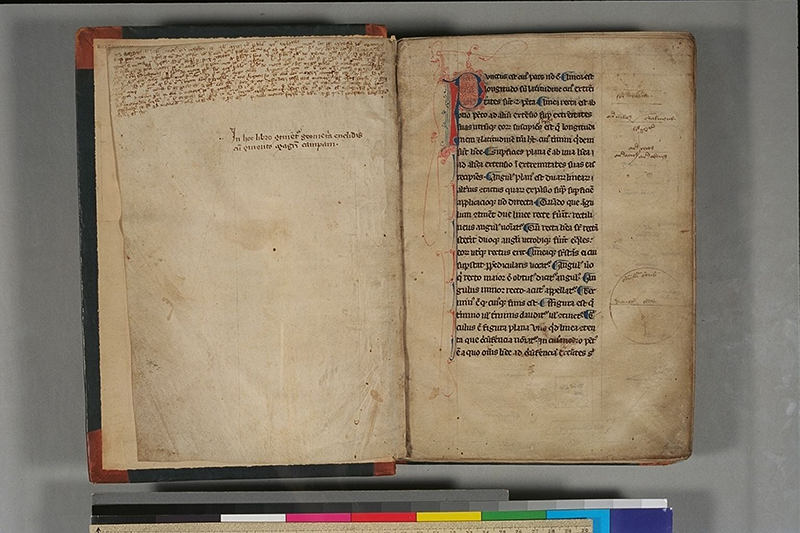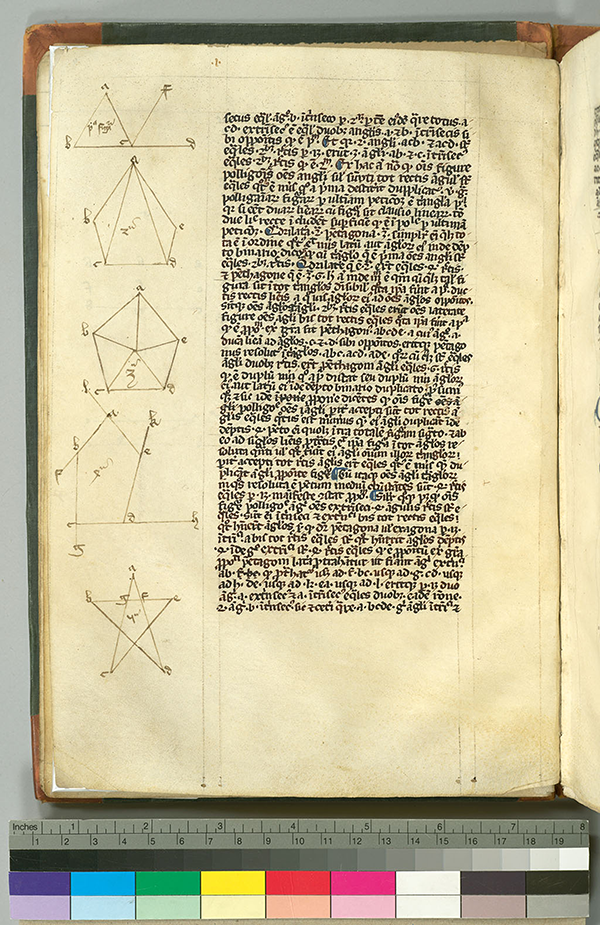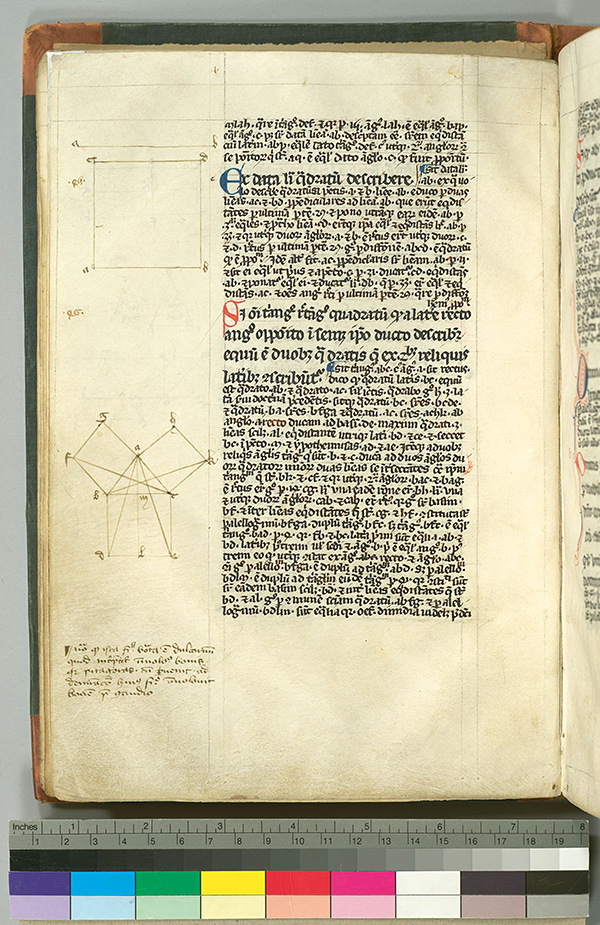- About MAA
- Membership
- MAA Publications
- Periodicals
- Blogs
- MAA Book Series
- MAA Press (an imprint of the AMS)
- MAA Notes
- MAA Reviews
- Mathematical Communication
- Information for Libraries
- Author Resources
- Advertise with MAA
- Meetings
- Competitions
- Programs
- Communities
- MAA Sections
- SIGMAA
- MAA Connect
- Students
- MAA Awards
- Awards Booklets
- Writing Awards
- Teaching Awards
- Service Awards
- Research Awards
- Lecture Awards
- Putnam Competition Individual and Team Winners
- D. E. Shaw Group AMC 8 Awards & Certificates
- Maryam Mirzakhani AMC 10 A Awards & Certificates
- Two Sigma AMC 10 B Awards & Certificates
- Jane Street AMC 12 A Awards & Certificates
- Akamai AMC 12 B Awards & Certificates
- High School Teachers
- News
You are here
Mathematical Treasure: Early 14th Century Flemish Euclid's Elements
A Flemish manuscript, Geometria Euclidis cum commento magistri Campani (c. 1300-1315, Plimpton MS 156), is one of the best extant examples of an early medieval Euclid's Elements. As is noted in its title, it bears a commentary by Johannes Campanus, also known as Campanus of Novara (c. 1220-1296), who was a mathematician, astronomer, physician, and early Euclidean scholar:

Folio 9v discusses the sum of angles for various geometric situations:

Folio 12v provides a familiar proof of the “Pythagorean Theorem”:

The images above have been obtained through the kind cooperation of the Rare Book and Manuscript Library of the Columbia University Libraries. These and more images may be accessed via Digital Scriptorium, a digital collection of medieval and early Renaissance manuscripts made available by a consortium of cooperating university libraries headed by the University of California, Berkeley.
Frank J. Swetz (The Pennsylvania State University), "Mathematical Treasure: Early 14th Century Flemish Euclid's Elements," Convergence (June 2018)




